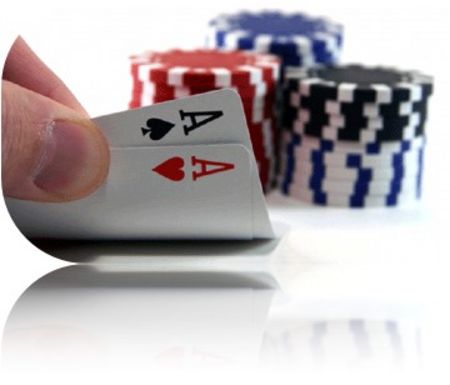Trash Hands

I define a trash hand as a hand that has no pairs, no straight or flush draws, and
does not have two overcards. For example A ♣ 7 ♣, 7
♥ 4
♥
, or K ♠ 8
♦ with a Q
♦ T
♥ 5 ♠
flop. The only time when trash hands are playable is when you are against one or
two opponents and you believe a bluff can be successful. Sometimes ace high is
the best hand, which might even justify a bet.
Let's look at some examples of when playing trash hands might be profitable.
Sometimes bluffing out of the blinds can be profitable with an all rag flop, or when
there is a rainbow flop with only one high card. For example, you are in the big blind
with an 864 flop against two early position callers. Betting out might win the pot. as
it is unlikely this flop helped your opponents.
Another example is with a Q53 flop and you are in early position with AT. You might
bet out into one or two opponents representing a pair of queens hoping that they
fold. When the flop is two-suited, two-connected, or has two high cards, be less
inclined to make these types of bluffs, as it is more likely that your opponents either
have a hand or have a draw. The exception to this is when you are acting last and
both of your opponents have checked. In this case, bluffing may be successful
since your opponents have indicated weakness and they might suspect that you
were the one helped by the flop.
Internet Tip
You will find yourself in small blind versus big blind situations a lot more on the Internet than you
would in a live game since in a live game you often "chop." Bluffing with trash hands in these
situations can often be profitable. If neither player raised preflop, you only have to win once every
three hands for bluffing to break even; therefore, betting out the flop from either the small blind or
big blind cart often be successful.
There are many different scenarios when bluffs might work, but be careful in playing
these trash hands. Remember, bluffing is risky when you don't have many outs.
Also, bluffs against three or more opponents are rarely profitable with these types of
hands.
Hopefully, these chapters on the flop have covered most of the common situations
you will find yourself in. Although it is impossible to cover every situation, you
should now have a good background to be able to evaluate any situation that might
arise.
One thing to remember is that there are always a wide variety of strategies
available to you. Sometimes two strategies could have an equal expectation. For
example, sometimes calling has a break-even expectation, so this is the same as
folding. Remember to vary your play so that your observant opponents aren't able
to read you like a book, and pay close attention to your opponents so that you can
begin to learn their betting patterns. The more you understand the betting strategies
of your opponents, the better decisions you can make when you play against them.
If you have the discipline to play good starting hands and you have a good
understanding of how to play the flop, you should be a profitable player. Now we
move to the turn and river where mistakes become more costly, but if you have
played well up to this point, you should be getting the best of it)
NEXT...The Turn

